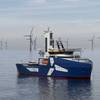Hydrogen As an Energy Carrier
Hydrogen can play a significant role in decarbonizing world energy supply to mitigate climate change, according to a new research paper by DNV GL, the technical advisor to the oil and gas industry.
According to new DNV GL research paper, decarbonization could drive an estimated 100,000-fold rise in demand for hydrogen for energy by 2050. The paper lays out a viable business concept for producing low-carbon transportable hydrogen offshore from natural gas.
'Hydrogen as an energy carrier' predicts demand for hydrogen for heating residential and commercial space, heat for industry, and transport to reach between 39 and 161 million tonnes of hydrogen per annum (Mtpa) in 2050, under various modelled scenarios. Currently, only about 1,000 tonnes of hydrogen production is for energy each year, mostly for hydrogen fuel-cell electric vehicles.
This estimated rising demand for hydrogen for energy comes after the UN Environment Emissions Gap Report revealed on November 27 that atmospheric levels of the greenhouse gas carbon dioxide rose for the first time in four years in 2017. The UN Environment Programme warned that if the gap between target and actual emissions is not closed by 2030, it is extremely unlikely that the 2°C upper limit on warming agreed as a target by almost all the world’s nations can still be reached.
DNV GL’s research paper analyses prospects for two types of low-carbon hydrogen production. Blue hydrogen is produced from fossil fuels (by either steam methane reforming or coal gasification) with carbon capture and storage to reduce the carbon footprint. It will be used largely to heat buildings and for industrial processes. Green hydrogen is made using an electricity mix with low greenhouse gas emissions to power electrolysis of water. It will principally be used for mobility.
'Hydrogen as an energy carrier' forecasts that green hydrogen may achieve cost parity with blue hydrogen in around 2030 in some regions. The paper asserts that green hydrogen can create value by harnessing surplus electricity from variable renewable energy sources such as wind and solar photovoltaic farms. It also proposes a viable business concept for producing transportable, blue hydrogen by reforming natural gas with carbon capture and storage on platforms more than 300 kilometres from shore.
“Natural gas currently provides a high proportion of the energy for such heating in these countries, and their existing gas infrastructure can be adapted to hydrogen distribution and storage. Importantly, they also have large-scale carbon capture and storage operations, or are beyond early stages of developing these,” explained the paper’s lead author, Dr Jørg Aarnes, senior principal engineer, DNV GL - Group Technology & Research.












